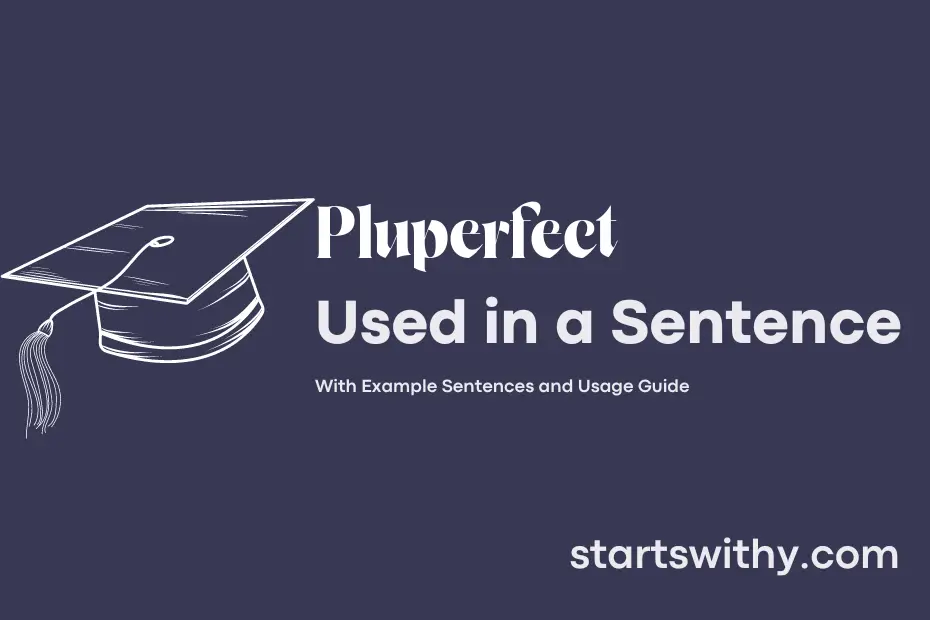Have you ever heard of the pluperfect tense in grammar? This verb form expresses an action that was completed before another past action.
In English, the pluperfect is formed by using the past perfect tense of the auxiliary verb “have” or “had” followed by the past participle of the main verb.
7 Examples Of Pluperfect Used In a Sentence For Kids
- Pluperfect shows an action that happened before another action.
- I had played with my toys before eating dinner.
- She had finished her homework before going to bed.
- They had read a story before going to sleep.
- He had brushed his teeth before watching TV.
- We had cleaned our room before playing outside.
- The cat had slept in the sun before waking up.
14 Sentences with Pluperfect Examples
- During the exam, she had already finished studying the entire syllabus.
- By the time the professor arrived, the students had already submitted their assignments.
- Before the lecture started, we had already discussed the topic in our study group.
- The library was closed because I had forgotten to return the books on time.
- By the time I realized there was a quiz, I had already missed the deadline to register.
- He had already completed the project before the deadline, impressing the professor.
- By the time the meeting began, we had already reviewed the presentation multiple times.
- She had already booked her tickets for the college event before anyone else.
- By the time I reached the bookstore, the textbooks I needed had already been sold out.
- The professor was pleased to see that the class had already started the assigned reading.
- I was disappointed to find out that the seminar had already ended when I arrived late.
- By the time the workshop started, the students had already formed study groups.
- She was relieved that the exam had already been rescheduled as she needed more time to prepare.
- By the time I checked the college website, the scholarship deadline had already passed.
How To Use Pluperfect in Sentences?
Using the Pluperfect tense in a sentence is a great way to talk about an action that was completed before another action in the past. To form the Pluperfect tense, you need the verb “to have” in the past tense (had) and the past participle of the main verb. For example, “I had eaten” or “She had finished.”
Here’s a simple guide to using the Pluperfect in a sentence:
- Identify the two actions in the past you want to talk about.
- Use “had” as the auxiliary verb, followed by the past participle of the main verb.
- Place “had” before the subject of the sentence.
For example:
– Incorrect: “She finished her homework before she had eaten dinner.”
– Correct: “She had finished her homework before she ate dinner.”
Remember, the Pluperfect is often used to show that one action had already been completed before another past action occurred.
In summary, by using the Pluperfect tense, you can clearly indicate the sequence of events that happened in the past. Keep practicing to become more comfortable with using this tense in your writing and conversations.
Conclusion
In summary, sentences with the pluperfect tense convey actions that had already been completed before another past action took place. By using the auxiliary verb “had” followed by the past participle, these sentences help to establish a clear chronological sequence of events in the past. For example, “She had already finished her homework before her friends arrived” demonstrates this tense by showing that the completion of the homework happened before the arrival of her friends.
Overall, mastering the pluperfect tense in writing and speaking allows for more precise expression of past events and their relationships in time. It adds depth and clarity to narratives by specifying the order of actions in the past, helping to paint a more detailed picture of events that have occurred before a certain point in time.



